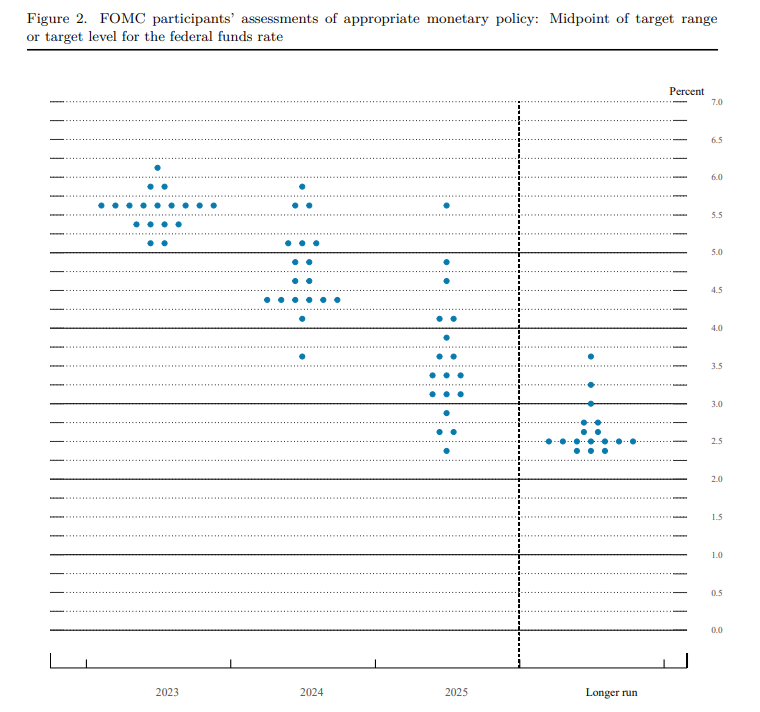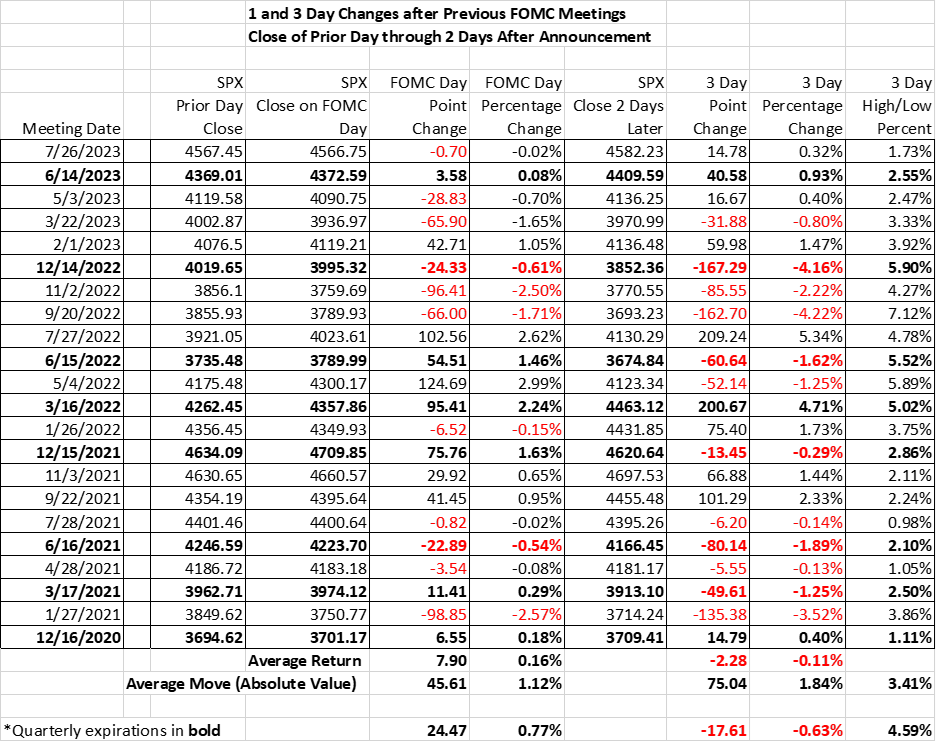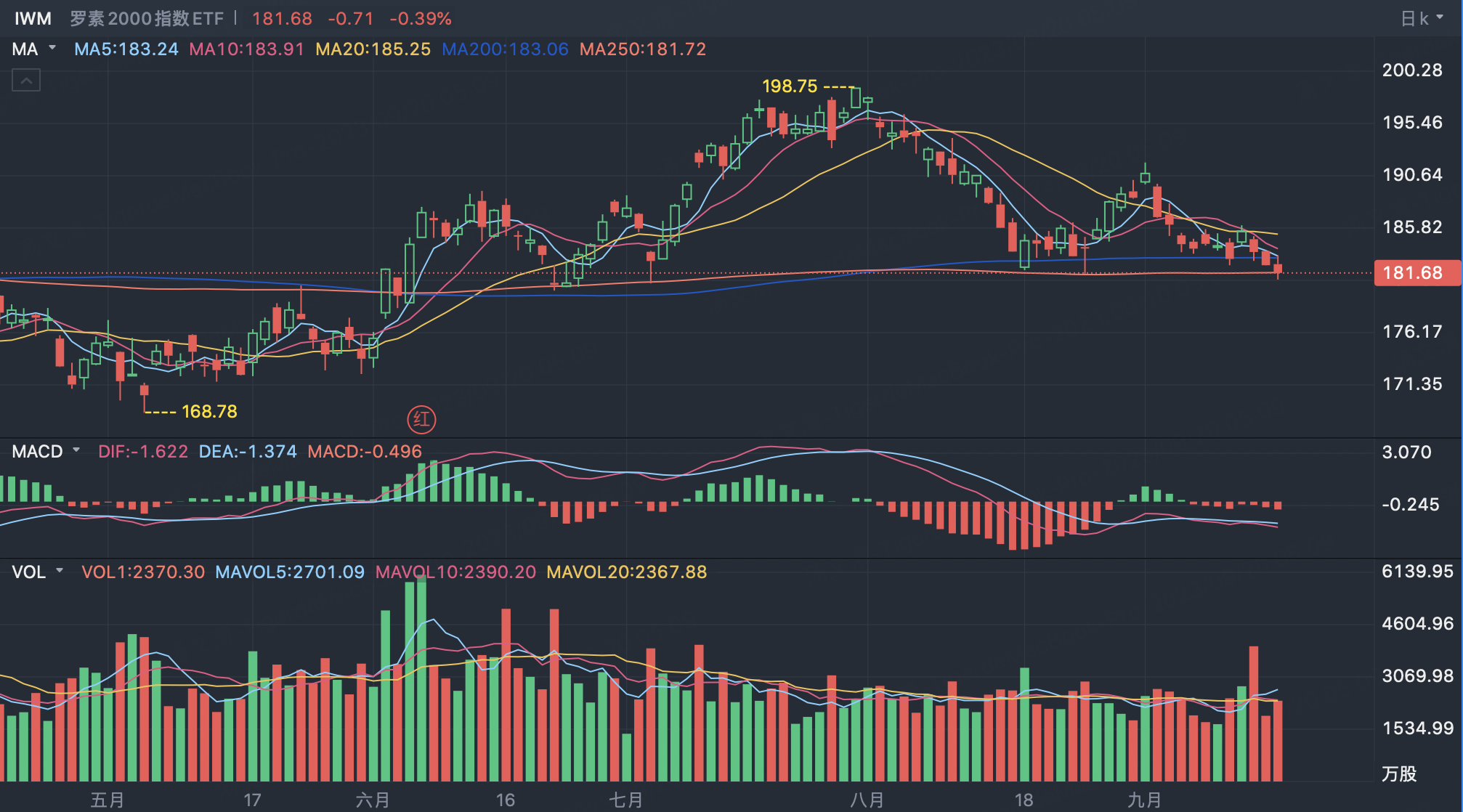The U.S. Federal Reserve kicks off a two-day policy meeting on Tuesday with officials widely expected to keep interest rates on hold for now, but also flagging in new economic projections whether they feel rates still need to rise further before the end of the year.
A new policy statement and interest rate decision will be released at 2 p.m. EDT (1800 GMT) on Wednesday, with Fed Chair Jerome Powell scheduled to hold a press conference at 2:30 p.m. to elaborate.
As of today, it appears that market expectations for this meeting are minimal. In fact, Fed funds futures point to a 0.8% probability, equating to no rate hike this week. The chances of a rate hike at the upcoming meeting are also slim, with the probability of a 25 basis point hike in November now at 32 percent and a December rate hike at 46 percent. The market has decided that we may or may not raise rates again before the end of the year.
Looking ahead to next year, futures pricing will cut rates as soon as June to July next year, with July futures almost certain to cut rates by 25 basis points and possibly another 1 to 3 basis points by the end of 2024. So far this year, the Fed has decided to keep rates on hold until 2023, and market expectations seem to be broadly in line with the FOMC's latest summary of economic forecasts (SEP), often referred to as the "dot plot" :
The SEP is updated every other meeting, so traders will be eagerly examining it when a new dot plot is published on Wednesday. Currently, the median year-end forecast for 2023 is 5.625% and the median year-end forecast for 2024 is 4.625%. These are roughly in line with current Fed funds futures forecasts of 5.446% and 4.572%, respectively. Now that traders are generally in sync with Fed policymakers, any change in forecasts should be quickly incorporated into market expectations.
Stock traders love any sign that interest rates are falling. But what if the lower rate path is based on generally weak economic forecasts? Given the relatively flat volatility of the past few months, it's not surprising that the stock market's reaction to the recent FOMC meeting has also been less volatile:
Notice how the 1-day and 3-day close-to-close and the 3-day high/low percentage changes have all been relatively modest and steadily declining after the past few meetings. When we reviewed the implied volatility term structure of the Standard & Poor's 500 Index (SPX) ahead of this week's meeting, we saw the volatility assumption for the meeting on Wednesday fall from 18.825% in June to 14.7% in July to 13.65% today. This roughly translates to an average one-day move of 1.18%, 0.92% and currently 0.85%.
Two tips apply to trading after an FOMC meeting:
1. The initial trend was wrong. Powell gave two sides to each policy, and as traders digested the comments, money did not coalesce in the market.
2. The difference between traders and investors. Traders respond to every utterance and nuance of the FOMC statement and Powell's press conference. Investors tend to wait until the next day to make macro moves based on this information. So Thursday's reaction is more likely to be the "real" reaction.
Reference strategy:
Look for stocks that are trading at support levels to develop trading strategies, such as $iShares Russell 2000 ETF(IWM)$
If the FOMC conclusion is aggressive and the stock price will fall further, consider the short spread strategy:
If the FOMC meets market expectations and Powell is dovish, stock prices will rally on this basis, consider the spread strategy of selling put options:



Comments
Great ariticle, would you like to share it?